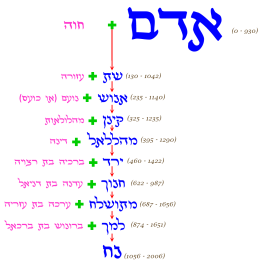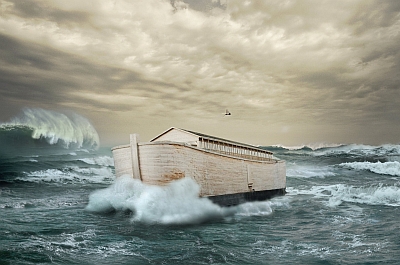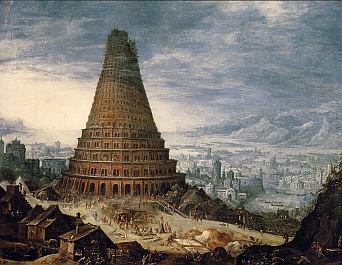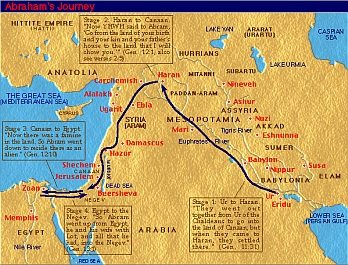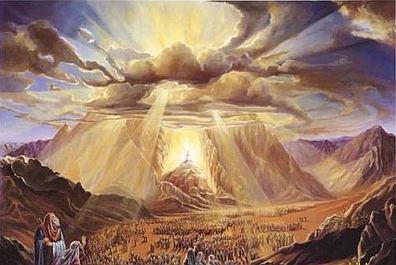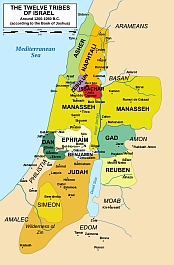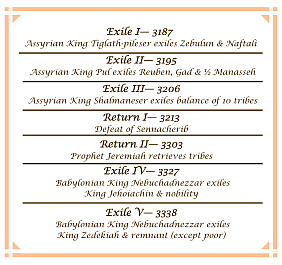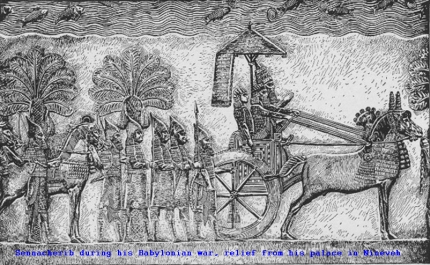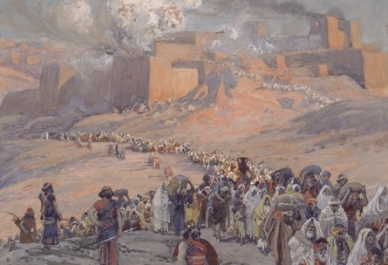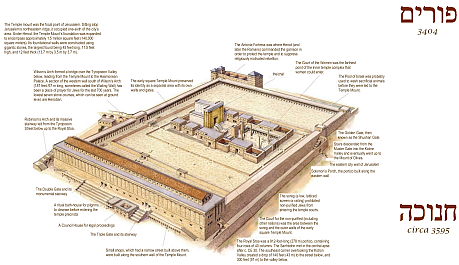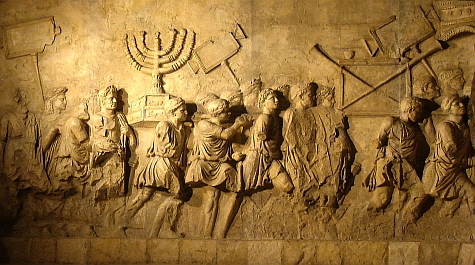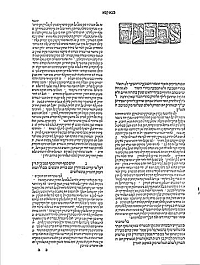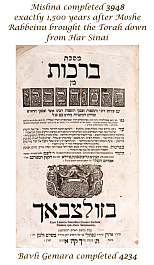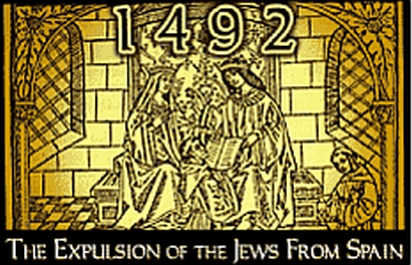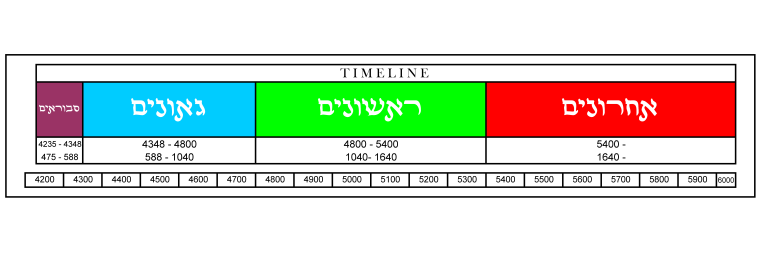Loading the Timeline, Please Wait a Moment


In what year was the world created?
There is a debate recorded in the Talmud regarding when the world was created (see Babylonian Talmud, Tractate Rosh Hashana 10b - 11a). Rabbi Eliezer is of the opinion that it was created in Tekufas (season of) Tishrei and Rabbi Yehoshua is of the opinion it was created in Tekufas (season of) Nissan. See the commentary of Tosfos (Rosh Hashana, 8a s.v. "le'Tekufas" where it states that as Adam was created on Friday, the 6th day of Creation, the world was created on Sunday, the first day of Creation. The date of that Sunday, based on the above-mentioned disagreement, was either 25 Elul or 25 Adar.
When numbering the years of the calendar, all agree that for purposes of the counting years, we follow the opinion of Rabbi Eliezer and count from Tishrei (see Rosh Hashana 12a). That means that Creation began on 25 Elul and that every 1 Tishrei marks a new year in the count. The date of 25 Elul is called Molid Tohu (the Desolation Molid) based on the world being only Tohu v'Vohu (desolate) at Creation. That "year" before the creation of Adam is called the Desolation Year. What year was that 25 Elul in our count? Was it year -1, year 0 or year 1? In other words, when Adam was created, was it 0, 1 or 2?
Furthermore, the counting system in use today has undergone change in our history. Right now, in October 2015, we count the Hebrew year as 5776. But, what is it 5776 years from? Is it from the Desolation Year or the Creation of Man? There is a very lengthy discussion in Babylonian Talmud, Tractate Arachin, 12a - 13a, regarding the years during which significant events occurred in our history. Included in the discussion are the counts for the Sabbatical Year (Shmittah) and the Jubilee Year (Yovel). The Artscroll edition of Arachin, footnote 12 to folio 13a in Arachin (page 13a2) describes two methods of counting years that were in use. In the East they counted from the Creation of Man. In the West they counted from the Creation of the World (the Desolation Year). This distinction leads a further possible discrepancy of one year, when switching between these two methods.
For the purposes of this timeline year ZERO was used for the Creation of Man and in all future date calculations. That means that when the Bible records Adam having lived 930 years, it is from year 0000 - 0930.
See the commentaries for the connection between the birth of Seth and the death of Cain. From Adam to Noah: 10 Generations

The Dor Enosh (Generation of Enosh)
It was during the days of Enosh that the people were led astray to worship idolatry. See Maimonides' commentary regarding how this came about.
Rashi to Deuteronomy 32:7 comments that during the time of Enosh the world was inundated by the waters of the ocean.
See the Me'am Loez to Genesis 5:9-11 (p310) that 1/3 of the world flooded. Footnote 6 cites Genesis Rabbah, chapter 23. Further on, in commentary to Genesis 6:5-6 (p326) the Me'am Loez states that in the times of Enosh the world flooded twice.
As early as 130 She may have been the daughter of ...

Na'ama
Who was Na'ama, wife of Noah? There are two opinions:
As early as 130
Alternatively, Na'ama was the daughter of Enoch. She would have been born during his lifetime (622 - 987), making her possibly only a few decades older than Noah.
Before 987
Alternatively, Na'ama was the daughter of Enoch. She would have been born during his lifetime (622 - 987), making her possibly only a few decades older than Noah.

Why Noah, although married, initially did not have children?
Noah was married to Na'ama, although initially they did not have children. Two reasons are presented for why this happened:
In those days children when people lived for so many centuries, being under 100 years old allowed you to be considered free from the judgment for sin. All 3 sons of Noah were under 100 at the time of the flood.
Another tradition states that G-d made Noah sterile in order to spare him future pain. If his mature children were not righteous they would have to perish in the flood, something that would cause Noah distress. As an aside, all of Noah's ancestors had passed away prior to the Flood. On the other hand, if Noah's progeny were all worthy, Noah would be pained by having to construct more than one ark.

Why did it need to take so long for Noah to build the ark?
Why did the ark take Noah 120 years to construct? The commentaries explain that this was an example of G-d's attribute of mercy. It gave the people many years to learn a lesson and have a chance to change and repent. How did this lesson come about? When someone would pass by Noah and ask what he was doing, Noah would explain that he was building an ark. When asked why, Noah would explain that G-d was going to bring a great flood unless the people repented from their ways. Unfortunately, the lesson was not heeded and so mankind and society needed to re-start.

The Timeline of the Flood
The flood began as a gentle rain. This was in when Noah was 600, "in the second month, on the seventeenth day" (Genesis 7:11-12).
Rashi quotes Seder Olam to explain the phrase "second month", as it could mean counting from Nissan or counting from Tishrei.
Seder Olam presents this sequence:
- 17th day of Mar Cheshvan - flood starts
- 29th day of Kislev - the 40 days of flood and rain end and the torrents begin
- 29th day of Iyar - end of 150 days of the water strengthening
- 1st day of Sivan - the waters began to recede
- 17th day of Sivan - the Ark came to rest in the Ararat mountain range
- 1st day of Menachem Av - the mountaintops are visible
- 10th day of Elul - the raven is sent out
- 16th day of Elul - the dove is sent out
- 23rd day of Elul - the dove is sent out again and it returns with an olive leaf
- 1st day of Tishrei - the dove is sent out and does not return; the water is gone and the muddy earth begins to dry up
- 27th day of Mar Cheshvan - the earth was fully dried (this was exactly one solar year - 365 days from the start of the flood)

Click to see an interesting description according to one commentary.
The Tower of Babal & the Dispersion
This time period is referred to as "The Dor Haflaga" (Generation of Dispersion). The tower of Babal was built in an effort to reach the heavens, possibly to either save themselves from another flood (one opinion quoted by Rashi is that they believed that once every 1656 years a Flood occurred) or to even attempt to wage war with Heaven. G-d decided to end their arrogance by removing their ability to understand one another. For more detail on the outcome, consult Tractate Sanhedrin 109a.
In the Pirkei d'Rabbi Eliezer (ch 24) it is written that the tower was 70 "mil" (a mil is 2000 cubits) high. Using the conversion form subscribed to by the Chazon Ish, Rabbi Avrohom Yeshaya Karelitz (1878 1953), it is 280,000 ft . As per NASA, the beginning of Space is near this height above earth.
The Me'am Loez records the year of the Dispersion as 1996 in Genesis 11:1 (p412) and he notes that Noah was still alive. Perhaps this event is related to another teaching recorded in the Me'am Loez to Genesis 11:31 (p432) that Abraham studied in the academy of Noah and Shem for 39 years (footnote 13 referencing Shevet Mussar) and that by time he was 48 he had mastered the understanding of G-d. Abraham was 48 in the year of the Dispersion.
Abraham's understanding of G-d was in three parts:
- את האלוקים התהלך נח (Genesis 6:9 and Rashi there): Noah walked with G-d (needing support, ie:reward). Noah's understanding was that G-d created the world and as such, one should serve Him and be rewarded
- אדנות: Abraham incorporated Noah's understanding with that of Lordship. That meant that G-d does not owe man reward, rather man owes G-d everything, as He created man. G-d does still reward man, but at His timetable and according the way He sees fit. Man may not understand what is beneficial and therefore a reward. Furthermore, it is possible for man to see the reward in the form of יסורין - pangs (forms of punishment). This is a benefit or reward, as if man in pays for his sins in this world, it results in a clean slate. This acceptance of G-d's Mastery was unequivocal, without regard to what commands made sense to Abraham. We see this in Genesis 12:4, in the dichotomy of the verse. Abraham went because G-d commanded. Lot went because Abraham was going, not because G-d commanded.
- התהלך לפני ואהיה תמים (Genesis 17:1): Abraham was commanded to walk before G-d and be pure. When Abraham was 99 years old, accepted the word of G-d and underwent circumcision, he adopted a revised view of G-d. שכר מצוה בהאי עלמא ליכא - there is no reward in this world. Whenever man does feel benefit, it is either to enable man to do the commandments or to test man to see if man will continue to follow in His way.
ברית בין הבתרים When Abraham arrived in the Holy Land for the first time, G-d revealed to him: "to give you this land to inherit it" (Genesis 15:7)
"(לתת לך את הארץ הזאת לרשתה (בראשית טו:ז"
This is the original and first source where G-d assigns the Land of Israel to the Jewish nation. This is 430 years before the Exodus (see Exodus 12:40).

The Life of Jacob
An overview of the significant dates related to the life of Jacob:
- Year 2108 - Jacob is born (see Genesis 25:26) when Isaac is 60 years old.
- Year 2123 - Esau sells the birthright to Jacob (see Genesis 25:29 and Genesis Rabbah 63:11).
- Year 2171 - Isaac blesses Jacob (see Genesis 27:2, 28:9 and Rashi's commentary).
- Year 2171 - 2185 - Jacob flees from Esau to the Academy of Eber (Shem has passed away in 2158). He serves Eber for 14 years (see 28:9 and Rashi's commentary).
- Year 2185 - Jacob arrives at the house of Laban in Haran and marries Leah and Rachel.
- Year 2185 - 2205 - Jacob works for Laban for 7 years in order to marry Rachel (Genesis 31:41).
- Year 2192 - Laban deceives Jacob and switches Rachel and Leah. He allows Jacob to marry both sisters, but forces Jacob to work for another 7 years.
- (see Me'am Loez, Genesis vol 3b, p598-600 and Exodus, p6)
- Reuben: 2193 - 2318 (Genesis 29:32)
- Simeon: 2194 - 2314 (Genesis 29:33)
- Levi: 2195 - 2331 (Genesis 29:34)
- Judah: 2196 - 2315 (Genesis 29:35)
- Dan: 2196 - 2321 (Genesis 30:5)
- Naphtali: 2198 - 2323 (Genesis 30:7)
- Gad: 2198 - (Genesis 30:10)
- Issachar: 2198 - 2320 (Genesis 30:17)
- Asher: 2199 - 2322 (Genesis 30:12)
- Joseph: 2199 - 2309 (Genesis 30:23)
- Zebulun: 2200 - 2314 (Genesis 30:19)
- Benjamin: 2208 - 2323 (Genesis 35:18)
- Year 2185 - 2205 - Jacob works for Laban; 7 years for Rachel, 7 years for Leah and 6 years as a shepard of the Laban's flock (Genesis 31:41).
- Year 2205 - Jacob leaves Laban, encounters Esau, wrestles with the Angel and arrives in Succoth.
- Year 2216 - The brothers sell Joseph.
- Year 2237 - Jacob sends his sons to Egypt to purchase food during the famine.
- Year 2238 - Jacob sends his sons to Egypt to purchase additional food. Joseph, viceroy of Egypt, reveals his true identity to his brothers. Jacob and his family arrive in Egypt.
- Year 2255 - Jacob blesses his sons. This is the first use of the classic Jewish verse of Shema שמע ישראל ה׳ אלוקינו ה׳ אחד (Hear O Israel, the Lord our God, the Lord is One). See an article on this topic and the actual page of talmud.
- Year 2255 - Jacob passes away in Egypt (Genesis 49:33) and was buried in the Holy Land, in the Makhpelah Cave in Hebron (Genesis 50:13).

The Egyptian Exile
An overview of the dates related to the Egyptian Exile are as follows:
- Year 2018 - The Covenant Between the Parts, where G-d tells Abraham that his descendants will be exiled in Egypt for 400 years. This is 430 years before the Exodus (see Exodus 12:40).
- Year 2048 - Isaac is born 400 years before the Exodus (see Genesis 15:13).
- Year 2238 - Jacobs 70 family members go down to Egypt. This is 210 years before the Exodus.
- Year 2332 - Egyptian slavery commences with the passing of the Levi, the last of the twelve sons of Jacob. This is 116 years before the Exodus.
- Year 2362 - "Avodas Perech", the most severe period of slavery in Egypt. It is marked with the birth of Miriam, the sister of Moses, named for the times, her name means "bitter". It is 86 years before the Exodus.
- Year 2418 - A portion of the tribe of Ephraim make a premature calculation that the end of the Exile has arrived. This error spurs their ambition and they manage to leave Egypt. On their approach to the Holy Land they are massacred by the Philistines. It is 400 years after The Covenant Between the Parts.
- Year 2448 - The Exodus, 430 years after The Covenant Between the Parts and 400 years from the birth of Isaac.

The Exodus
An overview of the timeline related to the Exodus (based on Rashi to Exodus 32:1 and 33:11) is as follows:
- Year 2447 - The Ten Plagues begin.
- Year 2448 - On Nissan 15 the enslavement of the Jewish people ends with the Exodus.
- Year 2448 - On Nissan 21, 7 days later, at the "ים סוף" (Reed Sea) the Jews, surrounded by the Egyptian army, experience the miracle of "קריעת ים סוף" - splitting of the sea, where all the Egyptians perish.
- Year 2448 - On Sivan 6, 50 days after leaving Egypt, the Jews experience the revelation at Mount Sinai where G-d gives them the Ten Commandments.
- Year 2448 - On Sivan 7 Moses ascends on high for 40 days to receive the transmission of the Oral and Written law from G-d.
- Year 2448 - On Tamuz 17, 40 days later, Moses returns from Heaven with the Torah, both the Oral and Written law. Upon observing the sin of the Golden Calf, Moses breaks the original tablets of the Ten Commandments.
- Year 2448 - On Tamuz 18 Moses disposes of the Golden Calf and judges those that sinned.
- Year 2448 - On Tamuz 19 Moses returns to Heaven to beseech G-d for forgiveness on behalf of the nation and the sin of the Golden Calf. He remains there for another 40-day period.
- Year 2448 - On Elul 1 Moses returns again for a third time to heaven to re-establish the relationship between G-d and the nation after the sin.
- Year 2448 - On Tishrei 10 Moses returns again from Heaven with the second set of Ten Commandment tablets. It is Yom Kippur.
These three periods of 40 days where Moses was in Heaven correspond to the 3 states of the Torah: the original tablets from G-d, the broken tablets and the second tablets that were made by Moses. They represent the three states of man: foundation, challenge and finally, achievement of man.
 From King Solomon: 18 Generations
From King Solomon: 18 Generations
Kings
There was a period of 24 kings, beginning with the short rule of King Saul (and his son) of the tribe of Benjamin. This was followed by the Davidic Dynasty.
King Saul was appointed by Samuel the Prophet. There are divergent views among the early commentaries as to the duration of his rule.
2884
King David was appointed by Samuel the Prophet to rule. His rule lasted 40 years but the first seven were only over the tribe of Judah.
2924
King Solomon was chosen as successor by King David and appointed at the end of King David's life. He reigned for 40 years.
Exile I (3187): Assyrian King Tiglath-pileser exiles Zebulun & Naftali
Exile II (3195): Assyrian King Pul exiles Reuben, Gad & ½ Manasseh
Exile III (3206): Assyrian King Shalmaneser exiles balance of 10 tribes

Exile and Destruction of the First Temple
King Jehoiakim [Elyakim] commenced his rule in 3317. After ruling 4 years, he was subjugated to Nebuchadnezzar, the Babylonian king.
In 3327 there was the first exile, known as the exile of "the cheresh & the masger (החרש והמסגר)". Nebuchadnezzar invaded Jerusalem and expelled the Jewish king, the Prophet Ezekiel & the ruling class.
Eleven years later, in 3338, Nebuchadnezzar's forces returned again and destroyed the Temple and exiled King Zedekiah [Elyakim] along with most of the remaining people in Jerusalem.
Detail on the Timeline of the Final Years of the First Temple
See Artscroll 11b - 13a in Arachin.

The Second Temple
In 3390, at the commencement of Cyrus the Persian's rule, he issued a proclamation encouraging the Jews to return to the Holy Land and rebuild the Temple.
In 3391, Zerubavel, leader of the Jews, had barely begun rebuilding the Temple, but the local Samaritan opposition proved too strong. They convinced King Cyrus to withdraw his support.
In 3408, Kings Darius once again permitted the rebuilding of the Second Temple. It stood for 420 years.
The Babylonian Talmud (Arachin 12a - 13a) discusses the duration of the Second Temple and the year it was destroyed.
3948 Rabbi Yehudah HaNasi Codifies the Mishna. It is 1500 years after receiving the Torah on Mount Sinai. This marks the end of the period.
4235 The Babylonian Talmud is completed.
 5684
Studied each day by Jews of many different backgrounds, the Daf Hayomi cycle is something that unifies all Jews across ...
5684
Studied each day by Jews of many different backgrounds, the Daf Hayomi cycle is something that unifies all Jews across ...

The Daf Hayomi cycle
Studied each day by Jews of many different backgrounds, the Daf Hayomi cycle is something that unifies all Jews across the world and is available to anyone willing to commit to a daily cycle of study.
It was founded by Rabbi Meir Shapira in Poland and it began on Rosh Hashana 5684 (11 September 1923); It is a systematic study of one page of Talmud per day, completing the entire Babylonian Talmud every 7 ½ years. In 2012, over 93,000 people attended the conclusion services held at Metlife Stadium in NJ marking the commencement of the 13th cycle.
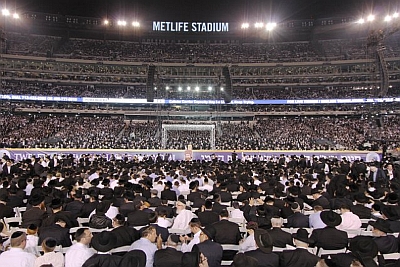
www.dafyomi.co.il/

Child Survivors This very dark period in the history of the Jews came to be known as the Holocaust or Shoah in Hebrew. During this period the Nazis and their collaborators systematically exterminated Jews across Europe. About 6 million Jews perished during this time and vibrant Jewish life in Eastern Europe came to an end.




